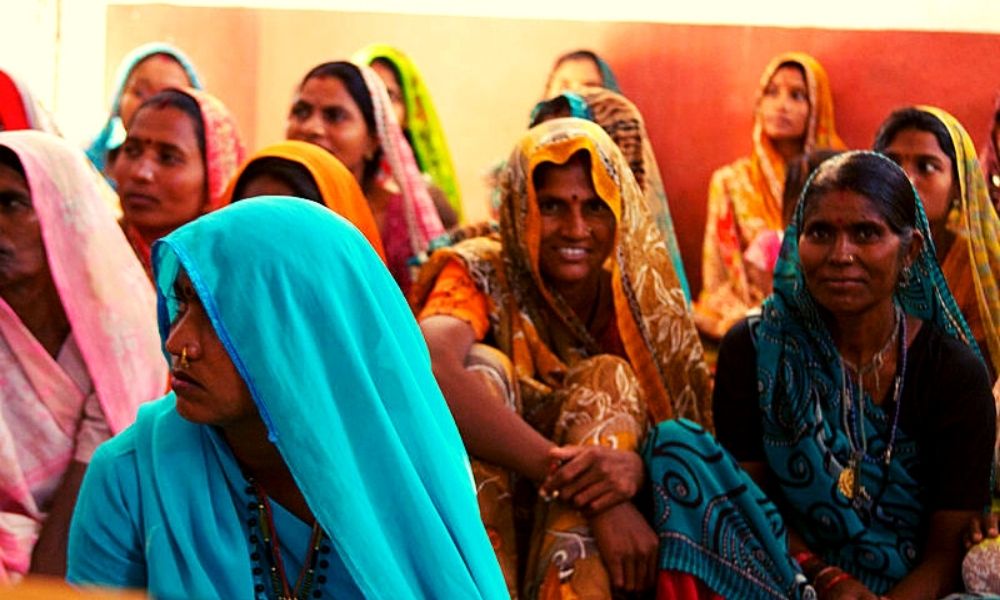
Image Credits: Wikimedia Commons
Women Left Behind! Gender Disparities In Healthcare, Jobs On Rise
India, 22 July 2021 8:42 AM GMT | Updated 22 July 2021 10:03 AM GMT
Editor : Sanal M Sudevan |
Keen to explore new things and learn something new every day in the field of jounalism.
Creatives : Tashafi Nazir
For most people, journalism sounds hectic and chaotic. For her, it's a passion she has been chasing for years. With an extensive media background, Tashafi believes in putting efforts on presenting a simple incident in the most interesting way.
Women have been hit and will find it difficult to recover in the world of health and job market. Gender disparities have worsened since the last one and a half year due to COVID-19 pandemic.
Women from poor households account for over 2,25,000 lesser hospital visits than men between 2017 and 2019 for nephrology, cardiology, and oncology services alone, a new study analyzing a Rajasthan state health insurance scheme has found.
The study, conducted by Pascaline Dupas and Radhika Jain of Stanford University and published as a National Bureau of Economic Research working paper, studied gender disparities within the Bhamashah Swasthya Bima Yojana (BSBY), a government health insurance programme that targets 46 million poor individuals in Rajasthan, India. Launched in December 2015, it entitles low-income households to free secondary and tertiary care at public and empanelled private hospitals. All members of families that meet state poverty criteria are eligible and automatically enrolled in BSBY.
The study compiled a dataset of insurance claims for all 4.2 million hospital visits under the programme from its launch in 2015 through late 2019. Significant gender disparities on both the extensive and intensive margins of BSBY utilization were found. Some households are more willing to spend on male than female health, which results in disparities in utilization because, even under BSBY, care-seeking costs are not zero.
Fewer Hospital Visits
Females account for only 45% of all hospital visits, with the biggest gaps among children under ten years (33%) and adults 50 years and older (43%). These differences are considerably larger than can be explained by Rajasthan's skewed population sex ratio (females account for 47% of the under-10 population and 48% overall). Differences in underlying health needs also cannot account for these gaps. Across several health conditions, the female share of BSBY hospital visits is more than ten percentage points (pp) lower than would be expected based on sex-specific illness prevalence estimates.
As a result of these disparities, public spending is pro-male. 57% of total spending and 60% of non-childbirth spending on BSBY is on males. Male-biased household resource allocation is a crucial factor behind the disparities in BSBY utilization, the study stated. It shows that hospital charges disproportionately deter care-seeking for females. Their utilization decreases relative to male utilization as the distance to the nearest hospital (another measure of care-seeking costs) increases and, conditional on getting care, households travel significantly further for male care.
According to the World Economic Forum 2021, India consistently ranks among the five worst countries in the world for the health and survival of females. A substantial body of research has documented gender bias in allocating household resources and health inputs in particular and has shown that it results in worse female health outcomes. Expanding access to and heavily subsidizing health care has been a key policy response to address health inequality, including gender. For decades, this primarily entailed the direct provision of health care through an extensive network of public health facilities. Since 2008, substantial public funds have been invested in the scale-up of government health insurance programs that entitle poor households to free hospital care.
Inequality In Job Market
Gender disparities are, however, not limited to healthcare only. Gender equality in work has also worsened since the last one and a half years into the COVID-19 pandemic.
According to a report by the International Labour Organisation (ILO), women have suffered disproportionate job and income losses, including their over-representation in the hardest-hit sectors. Globally, women have been disproportionately hit in terms of job losses: 4.2 per cent of women's employment was destroyed due to the pandemic compared to 3 per cent of men's employment.
The study shows that in 2021, there will still be 13 million fewer women in employment compared to 2019, while men's careers will have recovered to 2019 levels. The projected employment growth rate be insufficient to bring women back to pre-pandemic employment levels because of more profound employment losses experienced by women in 2020 (-4.2 per cent).
Globally, in 2021, the number of employed women is projected to be 13 million less than in 2019, while the number of men in employment is projected to be about the same as in 2019. Women's employment in 2021 is projected to be 1,270 million, while men's is forecasted to reach 2,019 million. Only 43.2 per cent of the world's working-age women will be employed in 2021, compared to 68.6 per cent of working-age men. In other words, in 2021 women will be still 25.4 percentage points less likely to be in employment than men.
Regional Employment Trends
The Americas experienced the greatest reduction in women's employment as a result of the pandemic. Between 2019 and 2020, women's employment declined by 9.4 per cent compared to a 7.0 per cent decline for men. The second-highest drop in the number of employed women was observed in the Arab States. Between 2019 and 2020, women's employment declined by 4.1 per cent and men's by 1.8 per cent.
In Asia and the Pacific, the shock of the pandemic led women's employment to decrease by 3.8 per cent compared to a decline of 2.9 per cent for men. The number of men in work is expected to rise by 3 per cent by the end of 2021, which would more than offset the job losses in 2020. By contrast, women's employment losses would not be compensated by the forecasted 3.2 per cent rise in 2021.
ILO emphasizes the need to build gender equality to the core of the recovery effort. "Efforts should be directed towards putting in place gender-responsive strategies aiming at full, productive and freely chosen employment and decent work for all, with a focus on the needs of the most vulnerable and hardest hit by the pandemic. An equitable and job-rich recovery, non-discriminatory labour markets, and care-inclusive economies are the only pathway to build resilience to crises such as the COVID-19 pandemic," the study stated.
Also Read: First Death Due To Bird Flu At AIIMS Delhi; Staff Under Isolation
 All section
All section














